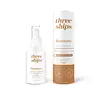What's inside
What's inside
 Key Ingredients
Key Ingredients

 Benefits
Benefits

 Concerns
Concerns

 Ingredients Side-by-side
Ingredients Side-by-side

Water
Skin ConditioningAloe Barbadensis Leaf Juice
Skin ConditioningDisodium Cocoyl Glutamate
CleansingGlycerin
HumectantPentylene Glycol
Skin ConditioningPopulus Tremuloides Bark Extract
AntiseborrhoeicBetaine
HumectantSaccharomyces Ferment Filtrate
HumectantCellulose Gum
Emulsion StabilisingHydrolyzed Jojoba Esters
Skin ConditioningXanthan Gum
EmulsifyingInulin
Skin ConditioningCellulose
AbsorbentGlucose
HumectantFructose
HumectantCamellia Sinensis Extract
AntioxidantCucumis Sativus Extract
Skin ConditioningSodium PCA
HumectantSodium Lactate
BufferingArginine
MaskingAspartic Acid
MaskingPCA
HumectantGlycine
BufferingAlanine
MaskingSerine
MaskingValine
MaskingProline
Skin ConditioningThreonine
Isoleucine
Skin ConditioningHistidine
HumectantPhenylalanine
MaskingCitrus Aurantium Bergamia Peel Oil
Sodium Phytate
Citric Acid
BufferingLinalool
PerfumingLimonene
PerfumingWater, Aloe Barbadensis Leaf Juice, Disodium Cocoyl Glutamate, Glycerin, Pentylene Glycol, Populus Tremuloides Bark Extract, Betaine, Saccharomyces Ferment Filtrate, Cellulose Gum, Hydrolyzed Jojoba Esters, Xanthan Gum, Inulin, Cellulose, Glucose, Fructose, Camellia Sinensis Extract, Cucumis Sativus Extract, Sodium PCA, Sodium Lactate, Arginine, Aspartic Acid, PCA, Glycine, Alanine, Serine, Valine, Proline, Threonine, Isoleucine, Histidine, Phenylalanine, Citrus Aurantium Bergamia Peel Oil, Sodium Phytate, Citric Acid, Linalool, Limonene
Water
Skin ConditioningGlycerin
HumectantCaprylic/Capric Triglyceride
MaskingSaccharomyces/Xylinum/Black Tea Ferment
Skin ConditioningCetearyl Alcohol
EmollientStearic Acid
CleansingDiheptyl Succinate
EmollientGlyceryl Stearate
EmollientSodium Lactate
BufferingCucumis Sativus Extract
Skin ConditioningHydrolyzed Jojoba Esters
Skin ConditioningXanthan Gum
EmulsifyingTocopherol
AntioxidantCapryloyl Glycerin/Sebacic Acid Copolymer
Skin ConditioningDecyl Glucoside
CleansingSodium Citrate
BufferingCaprylhydroxamic Acid
Glyceryl Caprylate
EmollientSodium Hydroxide
BufferingWater, Glycerin, Caprylic/Capric Triglyceride, Saccharomyces/Xylinum/Black Tea Ferment, Cetearyl Alcohol, Stearic Acid, Diheptyl Succinate, Glyceryl Stearate, Sodium Lactate, Cucumis Sativus Extract, Hydrolyzed Jojoba Esters, Xanthan Gum, Tocopherol, Capryloyl Glycerin/Sebacic Acid Copolymer, Decyl Glucoside, Sodium Citrate, Caprylhydroxamic Acid, Glyceryl Caprylate, Sodium Hydroxide
 Reviews
Reviews

Ingredients Explained
These ingredients are found in both products.
Ingredients higher up in an ingredient list are typically present in a larger amount.
Cucumis Sativus Extract comes from the cucumber. Cucumbers have anti-aging, anti-inflammatory, and hydrating properties.
Cucumbers are mostly made up of water (95%), and the other 5% is composed of: vitamin C, caffeic acid, fatty acids, amino acids, and other minerals.
Glycerin is already naturally found in your skin. It helps moisturize and protect your skin.
A study from 2016 found glycerin to be more effective as a humectant than AHAs and hyaluronic acid.
As a humectant, it helps the skin stay hydrated by pulling moisture to your skin. The low molecular weight of glycerin allows it to pull moisture into the deeper layers of your skin.
Hydrated skin improves your skin barrier; Your skin barrier helps protect against irritants and bacteria.
Glycerin has also been found to have antimicrobial and antiviral properties. Due to these properties, glycerin is often used in wound and burn treatments.
In cosmetics, glycerin is usually derived from plants such as soybean or palm. However, it can also be sourced from animals, such as tallow or animal fat.
This ingredient is organic, colorless, odorless, and non-toxic.
Glycerin is the name for this ingredient in American English. British English uses Glycerol/Glycerine.
Learn more about GlycerinThis ingredient is created by cleaving jojoba oil to remove all fatty acids, fatty alcohols, and wax esters.
Hydrolyzed Jojoba Esters has emollient, stabilizing, and hair-conditioning properties.
Sodium Lactate is the sodium salt of lactic acid, an AHA. It is a humectant and sometimes used to adjust the pH of a product.
This ingredient is part of our skin's NMF, or natural moisturizing factor. Our NMF is essential for the hydration of our top skin layers and plasticity of skin. NMF also influences our skin's natural acid mantle and pH, which protects our skin from harmful bacteria.
High percentages of Sodium Lactate can have an exfoliating effect.
Fun fact: Sodium Lactate is produced from fermented sugar.
Learn more about Sodium LactateWater. It's the most common cosmetic ingredient of all. You'll usually see it at the top of ingredient lists, meaning that it makes up the largest part of the product.
So why is it so popular? Water most often acts as a solvent - this means that it helps dissolve other ingredients into the formulation.
You'll also recognize water as that liquid we all need to stay alive. If you see this, drink a glass of water. Stay hydrated!
Learn more about WaterXanthan gum is used as a stabilizer and thickener within cosmetic products. It helps give products a sticky, thick feeling - preventing them from being too runny.
On the technical side of things, xanthan gum is a polysaccharide - a combination consisting of multiple sugar molecules bonded together.
Xanthan gum is a pretty common and great ingredient. It is a natural, non-toxic, non-irritating ingredient that is also commonly used in food products.
Learn more about Xanthan Gum